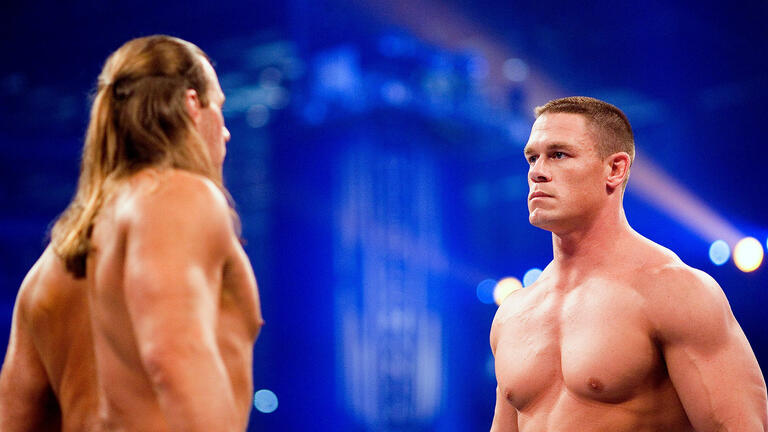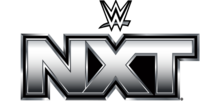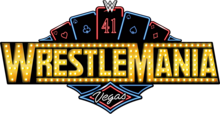
Where Are They Now? Lance Storm
It’s hard to imagine that someone who won the Intercontinental Championship, United States Title and multiple tag team championships didn’t have the same childhood that many Superstars talk about, where they were mesmerized by the larger-than-life heroes of the ring at a young age. In fact, Lance Storm wasn’t allowed to watch wrestling at all. ( CLASSIC PHOTOS | CURRENT PHOTOS)
“My dad was very critical of wrestling and didn’t like it,” Lance Evers, the man behind the Storm, told WWEClassics.com.
It wasn’t until he was a teenager that he became a fan of sports-entertainment. A random channel flip landed him in the middle of AWA, where announcer Ken Resnick was hyping up The Road Warriors’ upcoming match. Evers stuck through the commercial break to see the massive Hawk and Animal, decked out in spiked shoulder pads and face paint. He was hooked.
Though he dove headfirst into the wild world of sports-entertainment through the AWA and Montreal’s International Wrestling promotion, it was the very first edition of WWE Saturday Night’s Main Event on Mother’s Day 1985 that stood out to Evers.
“I was home alone on a Saturday night and came across it and thought ‘Wow, this is so big and bright and colorful!’ ”
Though Evers had become a huge fan of wrestling, the thought of making his living inside the ring never crossed his mind at first.
“I always assumed that people got normal jobs, you went to university, you get a degree, get a job, that’s what I was going to do,” he said.
So Evers headed off to university in pursuit of a career in accounting. He soon found that school wasn’t for him. Unhappy with the prospects of the financial world, he looked for other avenues to make a living. The light bulb soon went on. He decided that wrestling was the line of work for him. He just needed a foot in the door. Luckily, he had family willing to give him a hand.
Lance and his stepfather called every wrestling school they could to find information on, including WWE’s Canadian office, where then-WWE President Jack Tunney attempted to give them the run-around.
“He eventually said ‘Look, sir, I’d really just rather not bother,’ ” Lance said of Tunney’s conversation with his stepfather.
After getting the cold shoulder from the WWE President, Lance had narrowed down his choices to two schools: WCW’s Power Plant in Atlanta and The Hart Brothers’ Wrestling Camp in Calgary, Alberta. For him, the decision came down to where someone his size would fit in better.
“Stampede [Wrestling] had a rep for producing some good smaller wrestlers: Beef Wellington, Brian Pillman, Dynamite Kid,” Evers said. “Going to a place that produced guys my size and not having to leave the country seemed like an easier step.”
Just eight months after deciding to pursue a career in sports-entertainment, Evers was headed west to Calgary to embark on a new journey. When he got to Alberta in summer 1990, it wasn’t exactly what he expected. The 21-year-old was surprised by some of the other trainees he met.
“When the first person I met was a 104-pound skinny kid, I was like ‘There’s no wrestlers here,’ ” he said.
Disillusioned by some of his fellow trainees, he considered packing up and heading home, until a chance meeting with another student convinced him he was in the right place.
“I met Chris Jericho a day or two before we started camp,” Evers said. “He was really a beacon of light sent from the heavens. We were the only two athletic-looking guys that showed up, so we gravitated to each other really quickly.”
With a new friendship formed, the pair headed to the Hart camp, only to find that the legendary family’s involvement was pretty much in name only.
“Keith Hart was the one who showed up and collected the money,” Evers explained. “I think he taught me how to do a victory roll.”
Outside of the victory roll, his training was handled by Ed Langley and Brad Young, a previous graduate of the Hart camp. For eight weeks, they showed Lance the ins and outs of the ring, preparing him for his first match that October against Jericho. As he explained, Storm has nothing but fond memories of his first foray into the squared circle.
“I remember it being so much fun and thinking Jericho had more charisma than Hulk Hogan had on his best day,” he recalled. “It’s an absurd statement, but he was much more charismatic and relaxed than I was. [The match] was the coolest thing in the world.”
After that, both Jericho and Storm traveled the world gaining experience, competing in Japan, Mexico and Europe. The friends would be reunited in 1994 by Jim Cornette in Smoky Mountain Wrestling. Initially, Storm was going to debut as a singles competitor, but when Cornette got a hold of Jericho’s highlight reel, plans changed.
“The majority of our early career was together. I was on [Chris’] reel, he was on mine,” Storm explained. “So [Cornette] called Jericho and said ‘I’d love to bring you in, but would you team with Lance Storm?’”
Jericho made sure he wasn’t throwing a wrench in his friend’s plans first, and then agreed to head down south. The Thrillseekers were born.
Smoky Mountain tried to build up Storm and Jericho as two young, fun-loving guys. Music videos were produced to create hype for The Thrillseekers, but it didn’t seem to click for Lance.
“It was fun doing them, but I always felt out of place,” he said. “We’re supposed to be these wild and crazy, outgoing party guys, which wasn’t me.”
Nonetheless, Storm and Jericho’s high-octane offense in the ring made up for any shortcomings in the music videos. The Thrillseekers wowed crowds across Appalachia until an unfortunate injury sidelined Jericho. Storm branched out as a singles competitor, capturing SMW’s Television Championship before leaving in 1995.
Storm returned to Japan before heading back to the States to enter a new land: The Land of the Extreme. Despite being one of the most clean-cut sports-entertainers in history, Storm found he fit in well with the wild ways of the extreme combatants.
“I was certainly the exception, not the rule in ECW,” Storm joked. “For the first year, I was coming in once a month to do the [ECW] Arena show between Japan gigs, so I was just flying in and flying out.”
He continued, "By the time I was full-time, I kind of established myself. People realized I did my own thing.”
Storm says his early years in ECW were formative in his growth as a performer. He spent most of them competing with and against a friend he’d met in Smoky Mountain, Chris Candido. The cocky combatant was a perfect foil for the serious Storm. He and Candido captured the ECW Tag Team Titles, but were often on the verge of losing them because of their incessant in-fighting. In fact, most of their title defenses were followed up by one-on-one bouts between the two. ( WATCH)
“We had the best of both worlds,” Storm said. “We both loved working so hard that wrestling twice a night with each other was a good thing. I think it was instrumental in my career.”
After ending things with Candido, Storm teamed with Justin Credible and picked up two tag team title reigns. But by mid-2000, Storm began to see the writing on the wall for ECW.
“Guys were having checks bounced,” he recalled. “I had a couple, but I basically told Paul that if I had another one, I’m gone. Then they showed up on time and cleared every week, but I realized the company was in trouble.”
With a wife and child at home and another on the way, Storm began looking elsewhere for work. WCW came calling and Storm jumped ship, quickly becoming a top name in WCW during summer 2000. He captured the Cruiserweight ( WATCH), the Hardcore ( WATCH) and the United States Championships ( WATCH) within a month of his debut. Storm was one of the most reviled competitors in the Atlanta-based organization, but before Storm could take the next step and go for the WCW Title, the rug was pulled out from under the entire company.
“I don’t think anybody really knew the end was coming because the story kept changing,” Storm said, describing the mood as WCW drew closer and closer to shutting down. “I think everyone thought it would go on forever.”
He said things seemed on solid footing when Turner executives gathered the talent together and informed them that a company led by Eric Bischoff would be buying the company and that Bischoff would be running things in the interim. Still, rumors persisted that WWE might be putting in a bid for WCW. So, Storm and most of his compatriots didn’t stake much in what they were being told.
“I really didn’t believe anything until we showed up in Panama City Beach, Fla., [for the last Monday Nitro] and there were WWE trucks in the parking lot,” Storm said.
Once WWE’s purchase of WCW was complete, Storm was part of a select group of competitors that were brought over in the deal. The Canadian Superstar would go on to make history May 28, 2001, when he was the first WCW star to appear on Monday Night Raw, flooring Perry Saturn with a superkick before disappearing into his hometown Calgary crowd.
The enormity of the situation didn’t even hit Storm at the time.
“I was just really terrified that the crowd wouldn’t know who I was before it was over,” he said. “I hadn’t wrestled in Calgary in more than a decade … If I didn’t get a pop in my hometown, I was dead.”
Thankfully, the crowd recognized him, putting Storm on good footing at the start of his WWE career.
Though the WCW/ECW Invasion fizzled out by the tail end of 2001, Storm established himself as a solid competitor and earned the respect of the WWE locker room. He went on to form successful tag teams with Christian and William Regal, earning multiple World Tag Team Championships along the way.
“I loved teaming with Lance," Regal said of his time with Storm. "It’s hard to get a team that worked as well as we did. We just worked perfectly together, with my entertainment skills and his being able to keep up completely in his own way.”
Toward the end of his WWE tenure, fans might remember “Stone Cold” Steve Austin deriding Storm for being “boring,” which turned into the typically stoic, serious Superstar becoming an overly excited dancing machine.
“It’s certainly not my favorite part of my career,” Storm said. “It just sort of lost direction along the way."
He explained, "You don’t have to be in the main event to have a great time in WWE. For every ‘boring’ promo or [moment] having to dance, there were at least five memories of really great matches on really good shows with really great people. It was really fantastic,” Storm said, fondly recollecting his time in WWE.
By 2004, back injuries and an urge to be home with his family led Storm to decide it was time to retire from in-ring competition. At the advice of WWE Hall of Famer Jim Ross, he took up a position as a trainer with Ohio Valley Wrestling, WWE’s developmental territory at the time – a gratifying experience.
“I really enjoy the artwork of the job, so being able to be the creative force behind other people and train them and watch them improve is as rewarding as being out there myself,” he told WWEClassics.com.
One of Storm’s trainees from that time has found great success on WWE’s main roster: former World Heavyweight Champion Dolph Ziggler.
“[Storm is] a no-nonsense guy, he tells you what works and what doesn’t,” Ziggler said of his trainer. “If you suck, he tells you. He calls it down the line.”
It was his aptitude for teaching students like Ziggler along with the encouragement of OVW staff to try and get a WWE developmental system in Calgary that led Storm to head back to the Great White North and found his own school, the Storm Wrestling Academy, which opened in September 2005. Though it’s not a WWE-affiliated training center, Storm’s reputation as a sound technical wrestler and a mentor has made his school into one of the best in the world, yielding several students who've joined WWE’s developmental program.
“I like the system that Jericho and I went through,” Storm said, explaining the similarities between his school and the Hart camp. “Everybody starts together and learns together. I think you learn the basics and foundations better [that way]. It prepares them to be a proper high-end performer so when they get out there, they can do the job well and hopefully achieve their dream of making it to WWE.”
Storm doesn’t judge his success as a trainer by how many of his students make it to WWE. Instead, he takes pride in the feedback he’s received from promoters and competitors that have worked with his students. Knowing that he’s taught his trainees to be professionals at all times is more than enough for him.
Even current WWE Superstars have taken notice of the quality competitors the one-time Intercontinental Champion produces. Storm's received messages from the likes of former World Heavyweight Champion Daniel Bryan, complimenting one of Lance's past pupils. He said the praise of people like Bryan make the job more rewarding than seeing students get signed by WWE.
In between cooking breakfast for his daughters, Rachel and Rebecca, and spending time with his wife, Tina, his focus is on making the Storm Wrestling Academy one of the top training schools in the world. If he had his way, an affiliation with WWE would be in the cards.
“In the back of my mind, if [Storm Wrestling Academy] ever could somehow tie in with a developmental system of some kind with WWE, I think that would be awesome,” he said.
However, that isn’t the end-all, be-all for him.
“As long as I can keep filling up my classes and produce people that represent this industry well, then I’ll be happy.”
For more information on the Storm Wrestling Academy, click here. Follow Lance Storm on Twitter @Storm_Wrestling.
WWE Shows Latest Results
Raw results, April 7, 2025: Rollins ignites a brawl with Punk that leads to a cryptic statement by The Visionary
Full ResultsSmackDown results, April 4, 2025: CM Punk cashes in his favor and puts Roman Reigns to sleep
Full Results





























--de3612b9543981440a24489e0e568d9b.png)
--79a9936ef855901b63425f6f3430ca6c.jpg)




